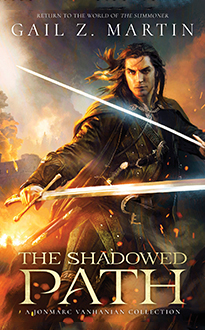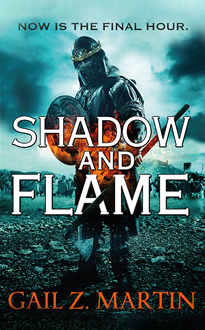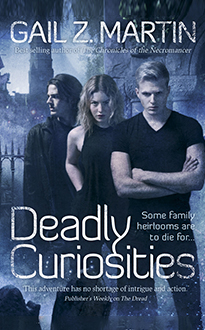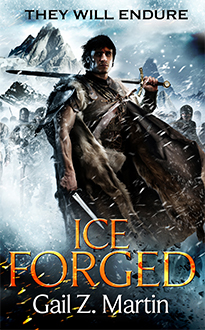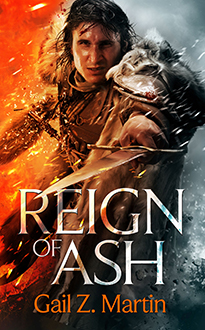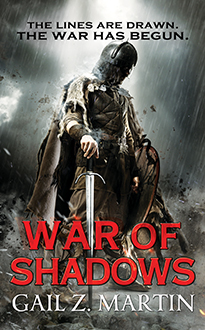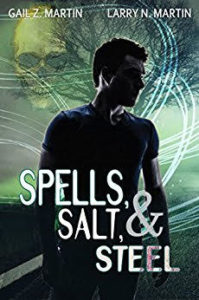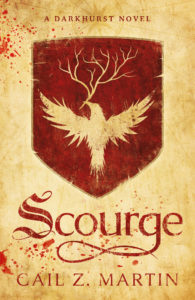By Gail Z. Martin
Collections weird me out. Whenever I hear about someone who has the ‘world’s biggest collection of’ fill-in-the-blank, I get a little cold chill down my spine, because dedicated collectors are obsessive, and coming from my viewpoint as a fantasy author, obsession is the root of madness.
Maybe I’m unduly influenced by my father, who was a collector and a hoarder (that’s really a spectrum of the same set of actions, defined by how high your collections are piled and the eye of the beholder). When he died, dealing with his collections took months, and ended up inspiring my Deadly Curiosities urban fantasy series about cursed and haunted objects. Most of the objects mentioned in Deadly Curiosities and Vendetta (as well as the tie-in short stories and novellas in the Deadly Curiosities Adventures) are pieces dad owned which I had to deal with, and some definitely did come with seriously bad vibes. My short story, Collector, even features one of those objects on the cover.
Some of my wariness about collections also stems from the ones I’ve seen donated to museums. The Mutter Museum, the Ripley’s Believe it or Not museums and the Warren Occult Museum are some of the creepiest collections of anatomical oddities, strange phenomena and potentially evil objects. But go through any major museum and you’ll see groupings of ancient objects like Roman curse tablets, Victorian post-mortem photography and memorial hair jewelry, odds and ends purchased as mementos on the Grand Tours of the Gilded Era back when anything could be bought for a price. I don’t claim any psychic ability, but I’ve more than one stood in front of the display case and shuddered, wondering “who thought it was a good idea to bring this stuff home with them?”
That touch of obsession that fuels hard-core collectors is the inspiration for a lot of fictional bad guys, from The Collector in Simon R. Green’s Nightside series to Vincent Price’s character in House of Wax, to characters like Bela Talbot and Cuthbert Sinclair in TV’s Supernatural. True obsession breeds ruthlessness and maybe a few glimmers of sociopathic behavior, the willingness to do anything to complete a collection or obtain a coveted object.
I come back to the concept of obsession and collecting in some of my other series aside from Deadly Curiosities. The Iron & Blood steampunk series, co-authored with my husband Larry N. Martin, features main characters Jake Desmet and Rick Brand whose import company acquires the hard-to-obtain (and sometimes ill-gotten) objects of desire for the Robber Baron captains of industry in 1898 Pittsburgh, along with some of the city’s powerful supernatural denizens. The Storm and Fury Adventures short stories and novellas that extend the series often deal with the ramifications of dangerous and paranormally tainted collections and the madmen behind them. And collecting several high-powered arcane items is an important element of my Ascendant Kingdoms epic fantasy series.
Collections of real-life objects may be a way to preserve history or recreate an emotional reaction with old memories, and most are certainly harmless. But it’s those outliers that give me the willies, and definitely reinforce the warning, ‘look but don’t touch.’
Check out my collections of a whole different sort! Trifles and Folly is a collection of the first nine Deadly Curiosities Adventures short stories, available for the first time on Kindle, Kobo and Nook! The Shadowed Path is a collection of eleven Jonmarc Vahanian Adventures short stories and serves as a prequel to my Chronicles of the Necromancer series—available in ebook and print. And King’s Convicts is a collection of three Blaine McFadden Adventures novellas that fill in a gap of time in Ice Forged from my Ascendant Kingdoms Saga—also available in ebook.
Let me give a shout-out for #HoldOnToTheLight–100+ Sci-Fi/Fantasy authors blogging about their personal struggles with depression, PTSD, anxiety, suicide and self-harm, candid posts by some of your favorite authors on how mental health issues have impacted their lives and books. Read the stories, share the stories, change a life. Find out more at www.HoldOnToTheLight.com
Creepy! Free excerpt from our Steampunk Storm and Fury Adventures short story Resurrection Day https://bit.ly/2efV7nF
An excerpt from Collector, the Deadly Curiosities short story I mentioned above https://www.wattpad.com/story/25330063-collector
Trick Or Treat w excerpt from my Jonmarc Vahanian Adventure short story Raider’s Curse https://bit.ly/12s119H from The Shadowed Path
Hot stuff! Look at my video for Ice Forged and Reign of Ash https://youtu.be/RPXi27GnSO4
Use your free Audible trial to get my books! The Summoner https://amzn.com/B0032COUQS
Read free excerpts from all of Falstaff Books’ new releases! https://bit.ly/2eoLwJu
DoubleDragonSampler#4 https://www.double-dragon-ebooks.com/sample/DDPSAMPLE004.mobi


